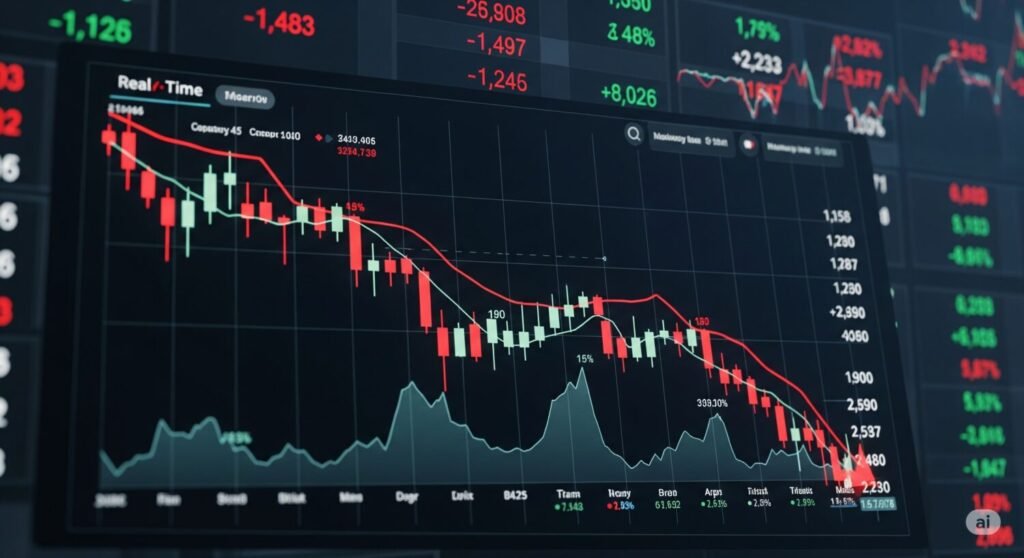Get a breakdown of the August 1, 2025, Indian stock market. Learn why Sensex and Nifty fell, key company news, and what drove market volatility.
A Tumultuous Day for Investors
The Indian stock market experienced significant turbulence on August 1, 2025, leaving many investors on edge. Both the Sensex and Nifty indices took a considerable hit, with the Sensex closing nearly 600 points down and the Nifty tumbling below the crucial 24,600 mark. Therefore, it was a day of widespread losses, with many heavyweight stocks feeling the pressure. For instance, major players like Tata Steel and Maruti saw their shares drop by 3% each, contributing significantly to the overall market downturn. This downward trend was not an isolated event; it was a complex reaction to several interconnected global and domestic factors.
Furthermore, a key driver of this market instability was a fresh wave of trade tensions. The United States announced new tariffs on a variety of goods from several countries, including India. Additionally, this news sent a ripple of uncertainty across global markets, and the Indian market was not immune. Therefore, foreign institutional investors, concerned about the potential economic fallout, pulled capital out of the market, a move known as sustained foreign fund outflows. This combination of weak global cues and a strong sell-off by foreign funds created a perfect storm, pressuring domestic investors and leading to a broad-based decline.
Key Headlines and Corporate Shifts
While the broader market struggled, some companies faced specific challenges that amplified their stock price movements. For example, PNB Housing Finance shares plummeted by a staggering 16% following the resignation of the company’s MD & CEO. This kind of sudden leadership change often creates uncertainty for investors, which can lead to a sharp sell-off as a knee-jerk reaction. Similarly, there were mixed results from the corporate world, with some firms performing well despite the broader market woes. Tata Power, for instance, reported a positive earnings update, with its consolidated net profit increasing by over 9%.
Here are some of the other significant stories that shaped the trading day:
- Rupee at a record low: The Indian rupee hit an all-time low against the US dollar, a direct result of ongoing tariff worries and the aforementioned foreign fund outflows.
- Algorithmic trading for retail investors: A new framework by the Securities and Exchange Board of India (SEBI) now gives retail traders formal access to algorithmic trading, potentially opening up a new era of high-speed trading for the average investor.
- Global market movements: The market’s decline was also influenced by similar downward trends in global markets, underscoring how interconnected the world’s financial systems are today.
- Company board decisions: Adani Power’s board approved a stock split, which is a move often intended to make shares more accessible to a wider pool of investors by lowering the price per share.
Looking Ahead
The market’s performance on this day serves as a powerful reminder of how quickly sentiment can shift. The interplay between global events, corporate governance changes, and investor behavior creates a complex and often unpredictable environment. Investors therefore need to be vigilant, staying informed about not just the big picture but also the specific company news that can have a dramatic impact. The new rules around algorithmic trading could also introduce new dynamics to the market in the coming months. Therefore, while this day was challenging for many, it provides valuable lessons for anyone navigating the ups and downs of the stock market.











